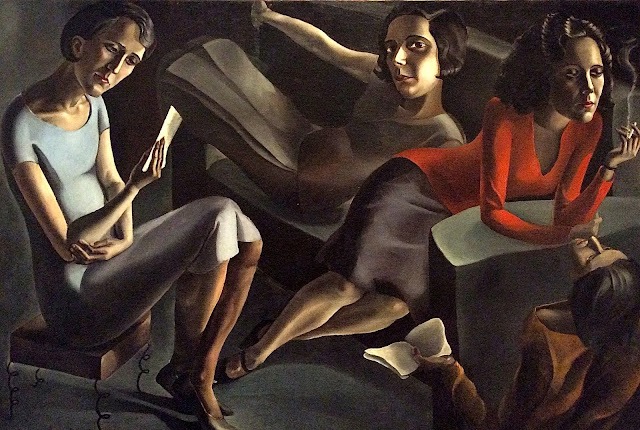
Ángeles Santos Torroella was born into a family of painters and writers in Portbou (Girona), 1911. She was a Catalan artist who was forgotten and rediscovered numerous times. She had adopted surrealism and expressionism, having developed a style that was avant-garde, obscure, mystical, and whimsical, which brought her immediate success and popularity among various Spanish cities. Her paintings were often dark and anguished, while also having calm portraits of family members as well, making her work diverse.



Having her parents foster her drawing and painting skills along with studying art in Valladolid with Cellino Perrotti, she became an artist at an early age. So early in fact, that at the age of 18, she had already painted one of her masterpieces, Un Mundo (A world), which is currently held in the Museo Nacional Centro de Arte Reina Sofia. The painting was originally presented at the Autumn Salon in Madrid in 1929—she received great critical and public acclaim, allowing her to become a pronounced leading figure of New Spanish Painting. Her instant call to fame was due to her revolutionary approach to artistic landscapes of her time, which was ambitious, modern, and original. It shocked people at the time due to her young age, and that she lived far from the cultural scene of the capital.
As a fan of surrealism, Torroella’s Un Mundo instantly stood out to me. It was a surrealist planet; a world that was strange yet poetic, influenced by her friends Federico García Lorca and Juan Ramón Jiménez’s poetic works. She admitted that it was inspired by the verses: “[…] Vague mauve angles / were putting out green stars / A calm ribbon / of soft violets / lovingly embraced / the pale Earth.” Her work was bold and unacademic, which gave this sense of freedom in this magical universe as well.

Another famous painting of hers was La Tertulia (The Discussion Group). The piece showcases four slouched women smoking, reading, and talking freely. During the time where women were not meant to paint or seen as inferior artists, this piece was a cry for freedom as well as a feminist response. This painting could also be seen as a foreshadowing of the future of her career, as it was interpreted as a clue to the pressures she faced that made her abandon painting.
Works Cited
“MNAC – Museu Nacional D’Art De Catalunya.” Ángeles Santos | Museu Nacional D’Art De Catalunya, https://www.museunacional.cat/en/angeles-santos.
“Spain Is Culture.” Ángeles Santos Torroella. Painting. Biography and Works at Spain Is Culture., http://www.spainisculture.com/en/artistas_creadores/angeles_santos_torroella.html.
“Ángeles Santos Obituary.” The Guardian, Guardian News and Media, 16 Oct. 2013, https://www.theguardian.com/artanddesign/2013/oct/16/angeles-santos.